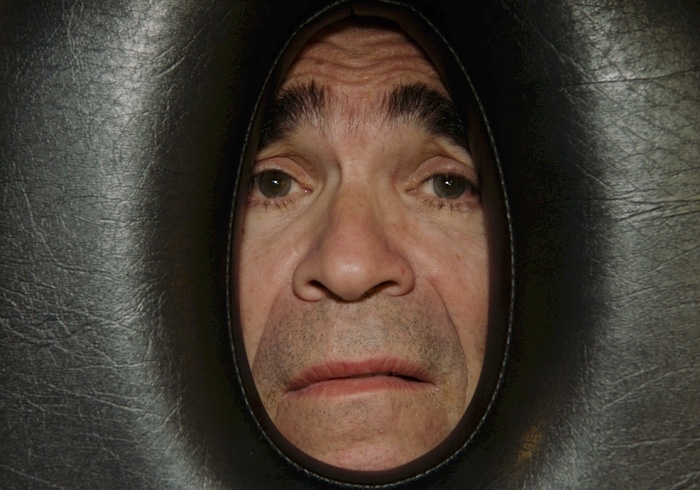For Kasper König, who founded Skulptur Projekte Münster in 1977 and has directed it ever since, contemporary sculpture offered a de facto tradition in postwar Germany, a dose of internationalism that would provide an antidote to the trauma that still seethed under the surface of German culture. Every ten years, artworks would be situated in the public realm, establishing sculpture as the vocabulary through which the Westphalian city of Münster, in particular, and the international community around Skulptur Projekte (ie artists and arts professionals, as well as other culture workers and tourists), generally, could register larger, more tectonic shifts in culture. Now in its fifth edition, the permanent installations the city has purchased, and decently maintains, demonstrate that it has become a dictionary of received sculptures, a repository of each decade’s prevailing attitudes towards sculpture. Overall, the direction has shifted towards installation, a term that belies a holistic understanding of an artwork; indeed, the show’s utopian promise burnishes the fiction of public space, and because it eschews theme, it requires that everything be read with Münster as its backdrop. Even the most austere artworks, like sculptures by Donald Judd or Tony Smith, are softened by this magnanimous spirit.
Though many of this edition’s 35 projects continue in this tradition, it is somewhat divided by countervailing sentiments. Those that belong to the high-spirited camp are motivated more by long-term engagements and long-range forecasts, attitudes central to Jeremy Deller’s Speak to the Earth and It Will Tell You (2007–17), for example. Culminating a work originally commissioned for the 2007 edition, Deller asked the proprietors of allotment gardens to keep a diary of their activities until 2017, and has reverently exhibited the hardbound tomes like a set of Proust in one of the furnished sheds that litter the site. Emeka Ogboh similarly takes the public as his medium, homing in on transitional spaces. Passage through Moondog (2017) plays audio inspired by Moondog, a shamanistic American jazz/classical street musician who in later life lived, and died, in Münster, within a pedestrian tunnel underneath the railway station; Quiet Storm (2017), another contribution, is a beer brewed ‘to the sounds of the city of Lagos’.
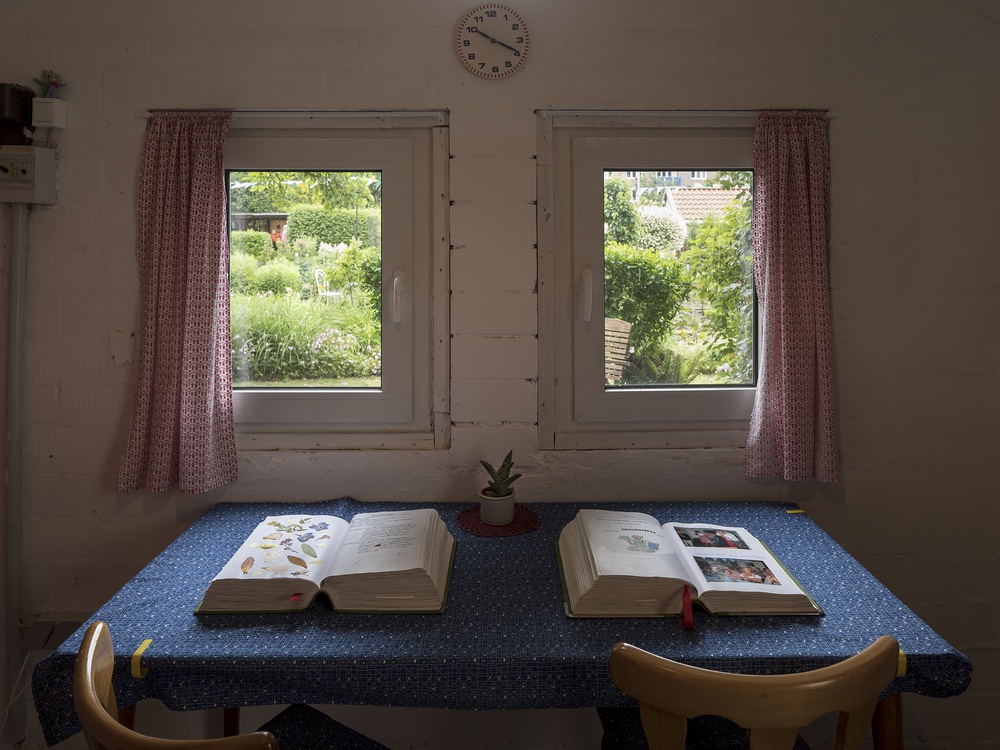
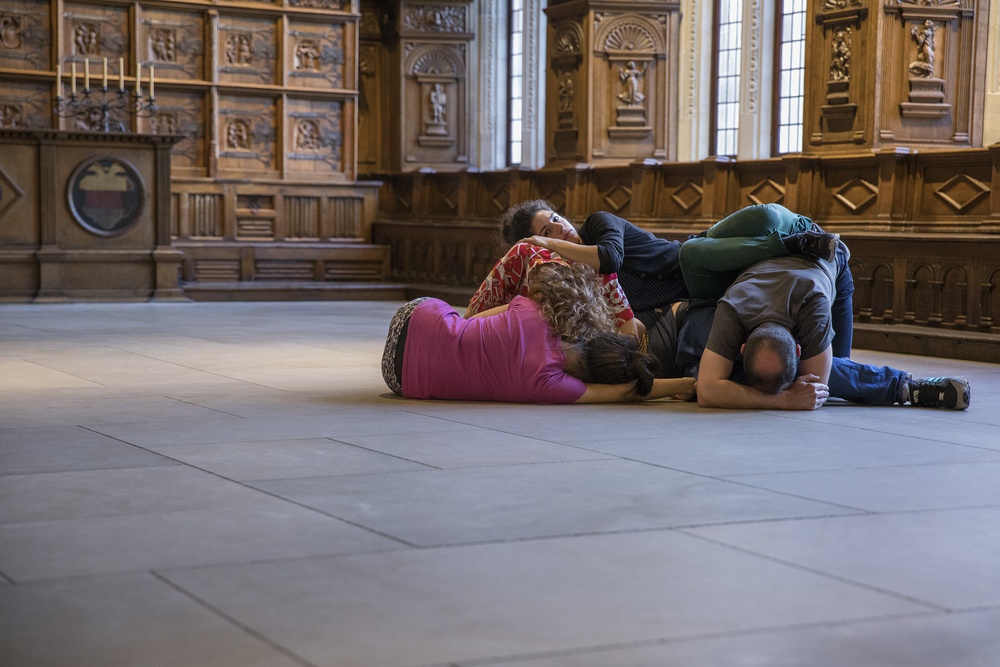
Cycling around Münster – the most important consideration to your experience of the sprawling show might be a decent bike – one finds a city flush with dreary reconstruction-era housing. This is a university town, and though equipped to shelter an ever-fluctuating population, the social models developed under reconstruction are reflected in this brand of housing, and, we can imagine, they continue to have an influence long after they were devised. Rethinking social architecture underscores Alexandra Pirici’s daily performance, Leaking Territories (2017), presented at the Historisches Rathaus, a building that has witnessed the Peace of Münster, which helped establish the notion of sovereign statehood in the seventeenth century, as well as the Münster Rebellion in the sixteenth century, in which radical Anabaptists, a small-scale insurrectionary group who bear resemblance to the apocalyptic spirit of modern, minoritarian fundamentalism, took control of the city for a year (after the failure of the rebellion, the leaders’ bodies were displayed in cages hung from St Lambert’s Church; the cages remain on display to this day). Pirici touches on this local legacy, presenting a performative essay of sorts: borrowing the form of the montage, it melds history scenes of revolution, as well as the signing of constitutions, into a historic soup seasoned with transgressions. (Spoiler: it ends when they form a live-action search engine.) Michael Smith’s Not Quite Under_ Ground (2017), a tattoo studio offering discounts to seniors over the age of sixty-five, also reflects on the shifting nature of protest and iconoclasm. Today, a boutique tattoo studio is as much a signifier of neighbourhood renewal as a coffee shop once was, and Münster exhibits the telltales of redevelopment: condos upcycling real estate.
Aside from this, a postapocalyptic streak runs through the Skulptur Projekte, seeming to reflect a broader shift among artists, and perhaps the left generally, from utopia to speculative, dystopian futures, that runs counter to Skulptur Projekte’s social optimism. The survivalism emphasised in Aram Bartholl’s 5v (2017), which converts a campfire into electricity for phone chargers, strings together with Christian Odzuck’s OFF OFD (2017), an absurdist, Frankenstein-like ruin resurrected from a recently demolished public building. Hito Steyerl’s video installation HellYeahWeFuckDie (2017), meanwhile, intertwines the history of robotics and insurgency in a dark-hearted romp. She converts the lobby of the LBS West bank into a training facility – for robots or militants? – in one of the few works not immediately accessible to the public. Flanked by an image of a golfer and a castle, respectively, the yellow sign in Ludger Gerdes’s Angst (Fear) (1989) reads, indeed, ‘Angst’. Thomas Schütte’s architectural sculpture, located in parkland, is eerily titled Nuclear Temple (2017).
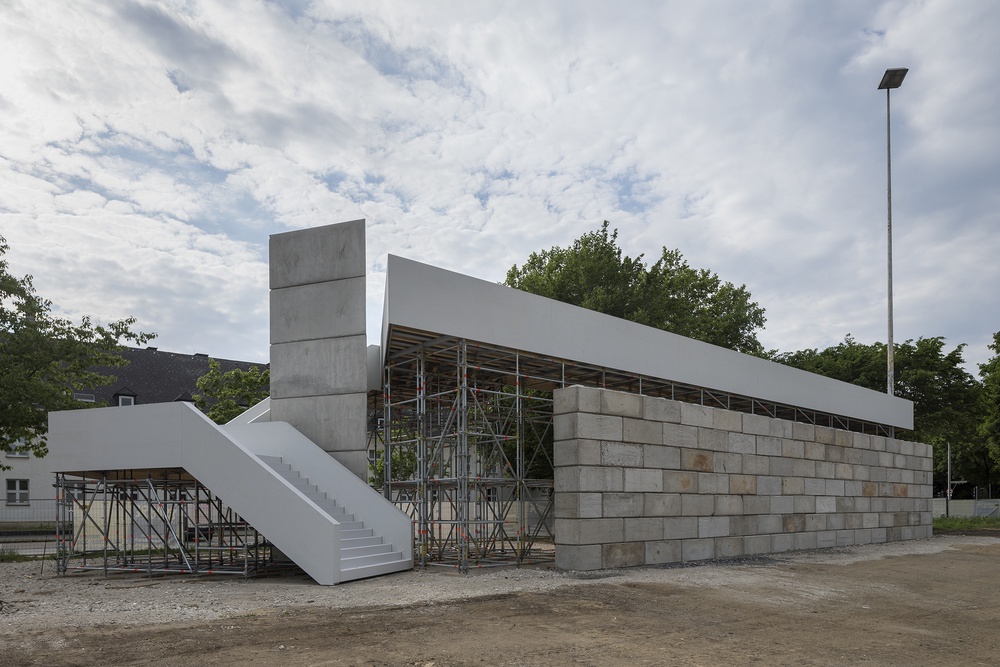
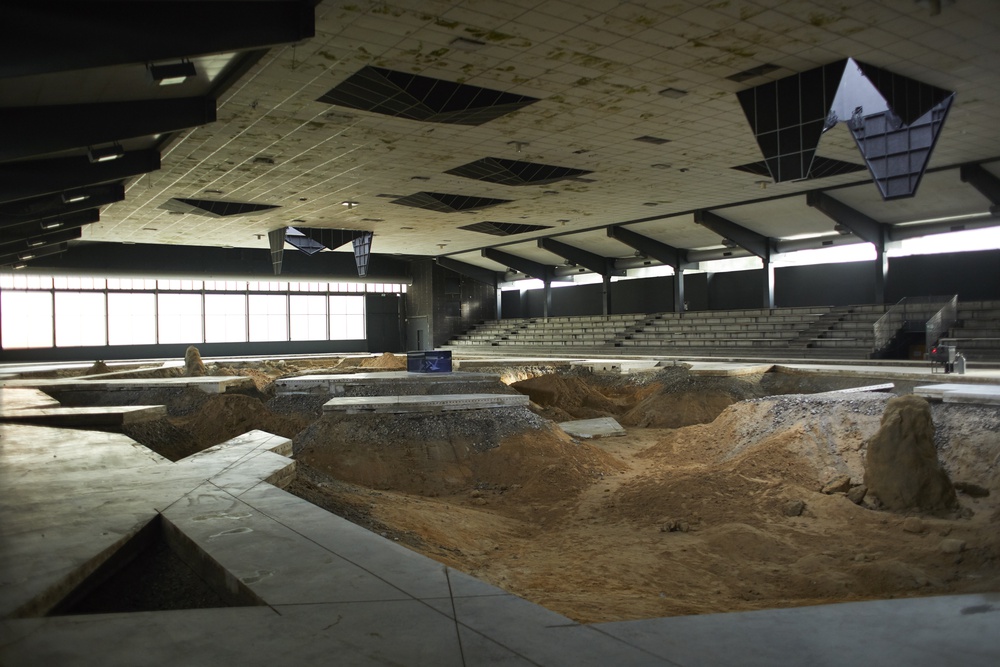
Some works nevertheless remain connected to the utopian spirit of the 1960s and 70s. John Knight’s A work in situ (2017) is a massive spirit level mounted on the exterior of the LWL Museum. It’s reminiscent of a time when such institutions held a more significant monopoly on the critical fundament, though it thumbs its nose at our present moment, too, asking why the contemporary art museum would be showcased in the historic city centre. Tucked away in a driveway courtyard also in the city centre, Koki Tanaka’s bunkerlike installation is the result of a series of workshops with a diverse set of volunteer Münsteraner. The volunteers’ job was to figure out ‘how to live together’ over a ten-day stint in this musty, secluded apartment. It would feel too doomsday-prep were it not for Tanaka’s sensitive knack for group dynamics. Through games, exercises and prompts, the group breaks down their assumptions, and videos display candid documentation through- out several furnished rooms. It feels like a letter from the future, in part because Tanaka refuses to turn his camera away. It’s perhaps the most hopeful work in the show.
Elsewhere, however, the overriding feeling is fear, appropriately enough, since by many accounts the catastrophe of the Anthropocene is already happening. It’s what leads to the equivocal atmosphere in Pierre Huyghe’s majestically scaled After ALife Ahead (2017). For this, he precisely excavated the concrete floor of a former ice rink, installing bee colonies, a fishtank and puddles filled with semiaquatic plants throughout the calm subterranean landscape. Skylights open and close, a pneumatic pump discharges – a combination of computer and environmental systems are at work, the processes of which are apparently determined by fluctuations in HeLa cells, so-called immortal cells originally derived from the cervical cancer cells of Henrietta Lacks (whose family was never compensated) in 1951, and kept alive in labs since. The notion of the public has morphed into an ecology, and Huyghe’s landscape vibrates with the subtle horror of a posthuman sublime. After ALife Ahead, it seems worth noting, can be found in a nondescript industrial estate, and behind a Burger King.
From the September 2017 issue of ArtReview
Various venues, Münster 10 June – 1O October
